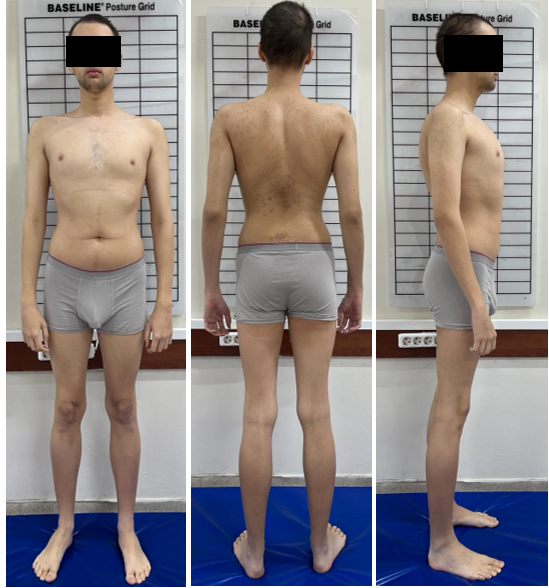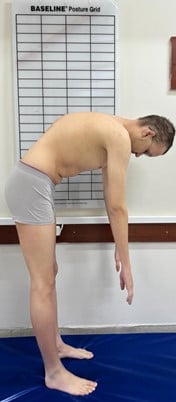Self-analysis materials (e.g., photos, charts, study reports to interpret, questions to think about etc.)
1. Read the medical history of the adolescent
2. Analyze history and examination results
3. Consider what you will do with this patient and then read what advice she/he received from her/his physical therapist.
Patient: Boy 14 years old, body height 154 cm, body weight 48 kg, student
Diagnosis: Postural defect (Kyphotic posture)
Reason for visiting a physiotherapist: A physiotherapist was consulted as a result of the adolescent’s family realising that there was a problem in the spine alignment.
Clinical examination:
Pain and discomfort feeling
Muscle strength
Flexibility
Distinguish between adolescent idiopathic scoliosis (Adam’s test)
Range of motion
Asymmetry of body
Posture analysis Forward Head Posture, Kyphotic Posture, Lordotic Posture, Kypho-lordotic Posture, Flat-back Posture, Sway-back Posture


Summary and recommendations:
When the functional status of this patient, who does not have any limitations or pain, is evaluated, he should be directed to a physical activity and exercise program as soon as possible.
For the child who does not accept treatment, it would be useful to consult a psychologist within the framework of a multidisciplinary team accompanied by a guidance counselor and family.
Strength and myofascial stretching exercises are recommended to ensure posture and spine stability. Additionally, ways to be active in daily life should be discussed with the adolescent, her/his family, and her/his guidance counselor. With the support of a psychological counselling and guidance specialist, the adolescent can be encouraged to do body awareness and posture corrective exercises.


Leave a Reply
Want to join the discussion?Feel free to contribute!